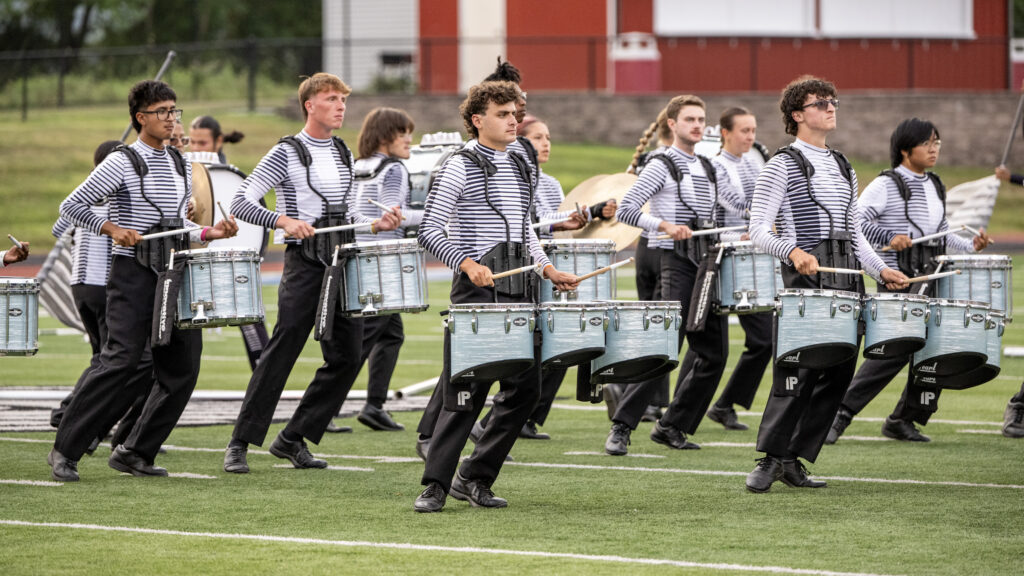Of the four individuals recently elected into the Drum Corps International Hall of Fame for 2007, the name that might be least known to today’s general drum corps public is Howard Dahnert of the Racine Scouts.
Dahnert’s work was critical to the development of the drum corps activity – especially in the Midwest – and his leadership helped inspire those who further built the activity as we know it today.
“In 1946, I attended a Boy Scout gathering in Grant Park in Chicago,” said the Cavaliers’ founder and president Don Warren. “While my troop (#111) put on their dance routine, I walked over to nearby Soldier Field to what other scouting groups were up to. It was at that time, after walking into the stadium and seeing a group called the Racine Scouts, that I met Howie Dahnert.”
“Coincidentally, as I watched the Racine Scouts, I had an inkling that what I was seeing on the football field would interest the members of my troop much more than what they were doing across the street at Grant Park.
“I spoke with Howie a few moments that day and he explained the drum corps activity, how his Scout troop was involved, and what it might take to do something like that with my own troop.
“Howie was always available to answer questions and give advice. Between his help and the help of C.H. Beebe of the Madison Explorer Scouts, Troop #111 from Chicago got its act together and grew into what we know today as the Cavaliers Drum and Bugle Corps.
“I am forever indebted to Howie and his great organization, as his help, inspiration and his understanding of ‘making sure it was all about the kids’ inspired me to begin my corps and make it what is today,” said Warren.
Pioneer founder and corps director Roman Blenski describes Dahnert as one who practiced and preached the benefits of having corps leaders work together for the common good of each group. Blenski also said that the Racine Scouts went on performance tours long before corps began what fans associate today as a standard drum corps tour.
“His care and development of the fine program with the Racine Scouts Corps helped to set the standard by which we were all measured,” said Blenski. “[Serving on many boards of corps associations], his cry was for the benefits of coordinated, cooperative and fiscally responsible leadership … He worked very hard to create fairness and equitable financial arrangements among the corps activity.”
George Jarosz, a member of the Racine Scouts under Dahnert, points out that Dahnert has been a tireless supporter of the corps for most of the 80 years the corps has been in existence. He said, “Howie made sure that all corps members took responsibility for their actions and projected a professional image on and off the field. He made sure that all corps members were respectful to each other, all adults and to other corps.”
Dahnert also is pegged by many as a drum corps innovator.
“The Racine Scouts were one of the first corps to break away from the traditional flag presentation during performances by doing an historical reenactment of the flag raising at Iwo Jima as part of their show. They were the first Scout corps to wear headgear not part of the official Scout uniform, wearing] the shiny chromed helmets that earned the corps the nickname ‘the Chrome Domes,'” said Drum Corps International’s Joe Courtney.
Current Racine Scouts manager Andrea Birbilis points out that at 89 years of age, Howard “still has good ideas about how to get young people involved with the drum corps activity.”
She added: “In 1938, a group of businessmen from Madison were so impressed with the Racine corps that they asked the Racine troop to come to Madison to help organize a new drum and bugle corps. Howard made the historic trek, culminating in the formation of the Madison Scouts Drum and Bugle Corps.”
Birbilis also said that Dahnert helped found the Badgerland Drum and Bugle Corps organization, serving as an umbrella group for more than 50 corps that were able to finally have a say in setting contests and tours throughout Wisconsin.
As a result, Birbilis said, “Corps could now able to link the dots together from one performance or parade to the next. Badgerland became a model of organization which would serve for an up and coming drum corps organization known as Drum Corps International.”





